Two multitalented and glamorous women decided to boldly experiment with existing forms of art, music, fashion and personal style, leaving an indelible imprint on Chinese culture in the process. Mathew Scott visited the Hong Kong exhibitions held in their honor.
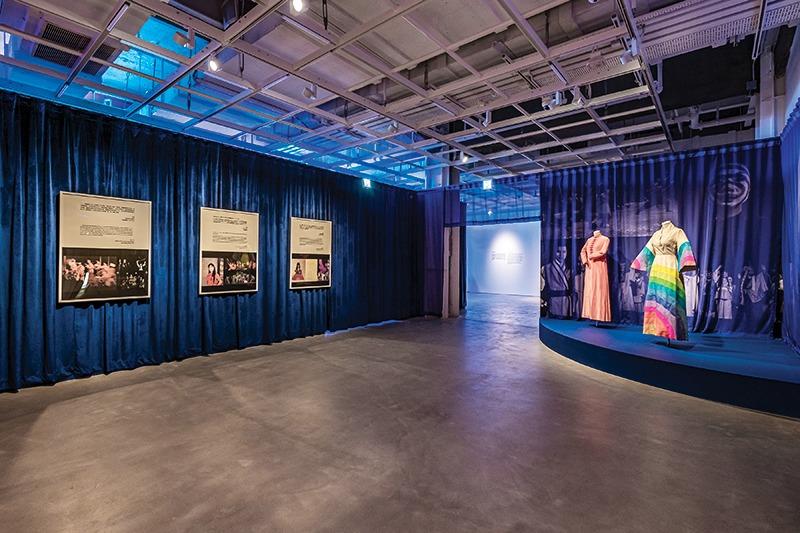 The Centre for Heritage, Arts and Textile is showcasing the many-splendored life and career of Hong Kong singer-actor Rebecca Pan. The display includes costumes worn by Pan for her stage shows. (PHOTO PROVIDED TO CHINA DAILY)
The Centre for Heritage, Arts and Textile is showcasing the many-splendored life and career of Hong Kong singer-actor Rebecca Pan. The display includes costumes worn by Pan for her stage shows. (PHOTO PROVIDED TO CHINA DAILY)
Pass through the doors of the Centre for Heritage, Arts and Textile (CHAT) in Tsuen Wan, and you’ll be greeted by Rebecca Pan. Though present at the venue only in the form of photos and video clips, the spirit of this multidimensional entertainer surrounds viewers as they wander through the exhibition celebrating her remarkable life and times.
Now 93, Pan is still active as an artist. She is busy writing her memoir as well as adding new material to the archive that forms the basis of CHAT’s With the Sun, She Quells the Night — A Tribute to Rebecca Pan exhibition. Watching the milestones of her illustrious career brought to life all over again must have been an emotional experience for the veteran actor and singer. The creative team — led by co-curators Wang Weiwei and Bruce Li and contributing artist Enoch Cheng — has managed not only to re-create the many worlds Pan has lived and worked in, but also design an immersive experience for the audience.
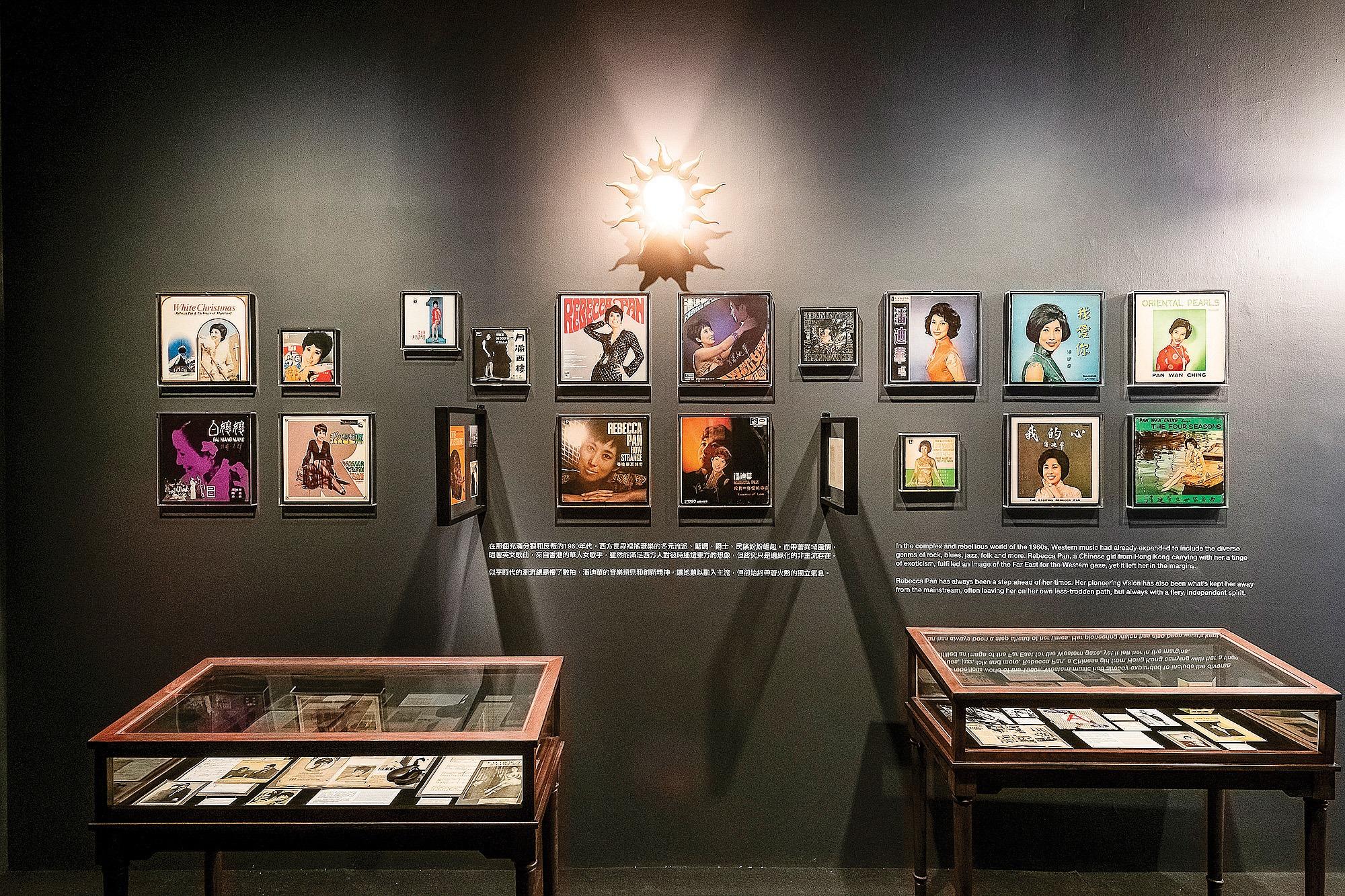 The artist’s numerous images on posters, album sleeves and magazine covers indicate her place in Hong Kong popular culture. (PHOTO PROVIDED TO CHINA DAILY)
The artist’s numerous images on posters, album sleeves and magazine covers indicate her place in Hong Kong popular culture. (PHOTO PROVIDED TO CHINA DAILY)
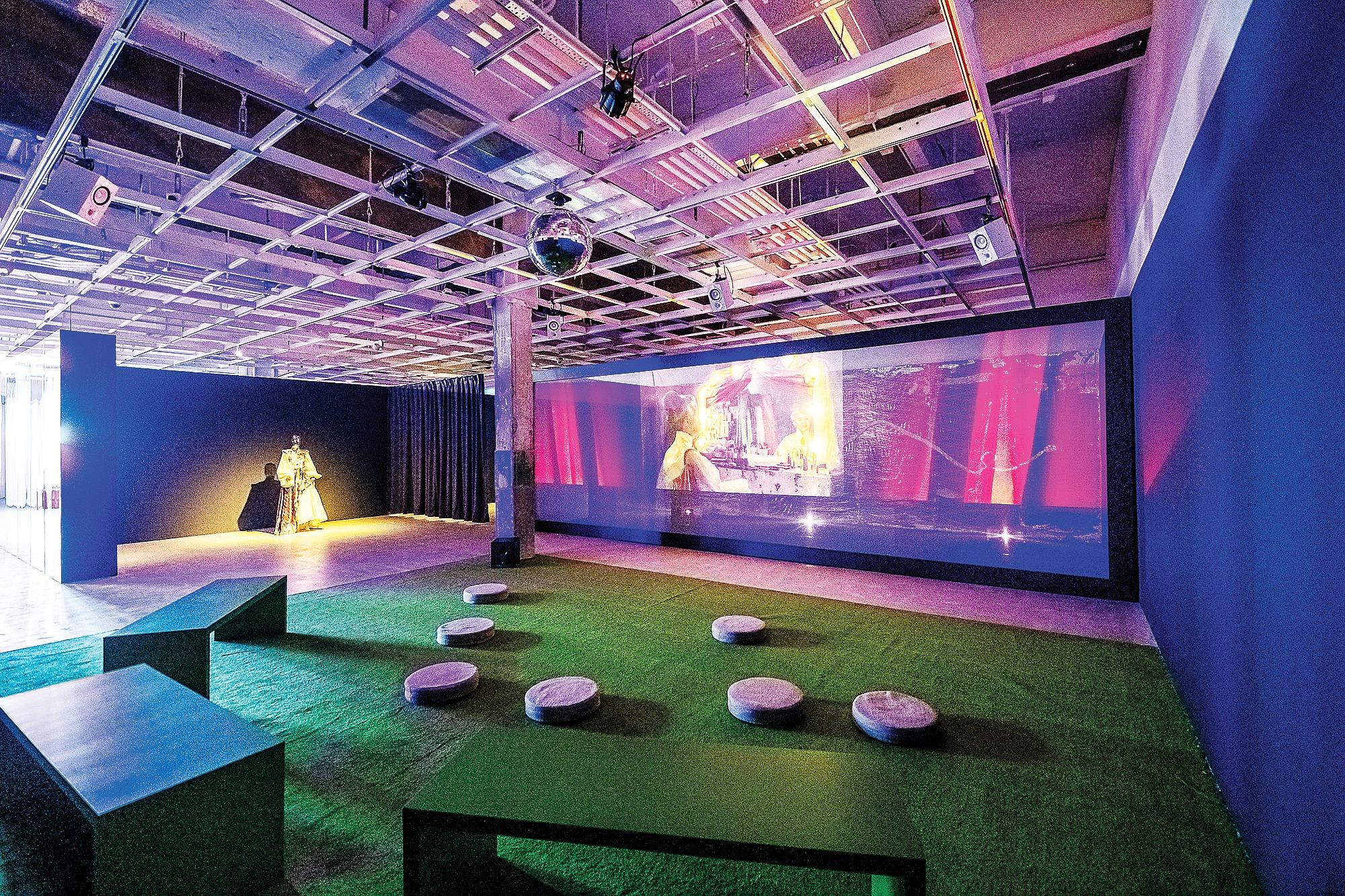 Enoch Cheng’s film, Just Like Snakes, revisits Pan’s commercially unsuccessful musical, Pai Niang Niang, based on a classic Chinese folklore. (PHOTO PROVIDED TO CHINA DAILY)
Enoch Cheng’s film, Just Like Snakes, revisits Pan’s commercially unsuccessful musical, Pai Niang Niang, based on a classic Chinese folklore. (PHOTO PROVIDED TO CHINA DAILY)
Pan was born in Shanghai in 1930. Beginning with her move to Hong Kong in 1949, the exhibition moves on to focus on her ground-breaking work combining Chinese music with Western lyrics — the kind of refreshing cross-cultural experiments that made her a favorite of auteur director Wong Kar-wai who used one of her songs in In the Mood for Love (2000) and also cast her in the role of the landlady.
Trying to find a global audience for her music, Pan made trips to pre-war Cambodia, the Middle East and East Europe in the 1960s — at a time when these cultures were often dealing with political crises. In 1967, she was the first host of the wildly successful TVB hit variety show Enjoy Yourself Tonight. In 1972, she produced and played the lead in Hong Kong’s first Chinese musical, Pai Niang Niang, based on the classic romantic folktale, The Legend of the White Snake, roping in legendary composer Joseph Koo to write the music. Viewers can get a taste of the power of Pan’s performances, via the photos, videos and costumes from the musical on display.
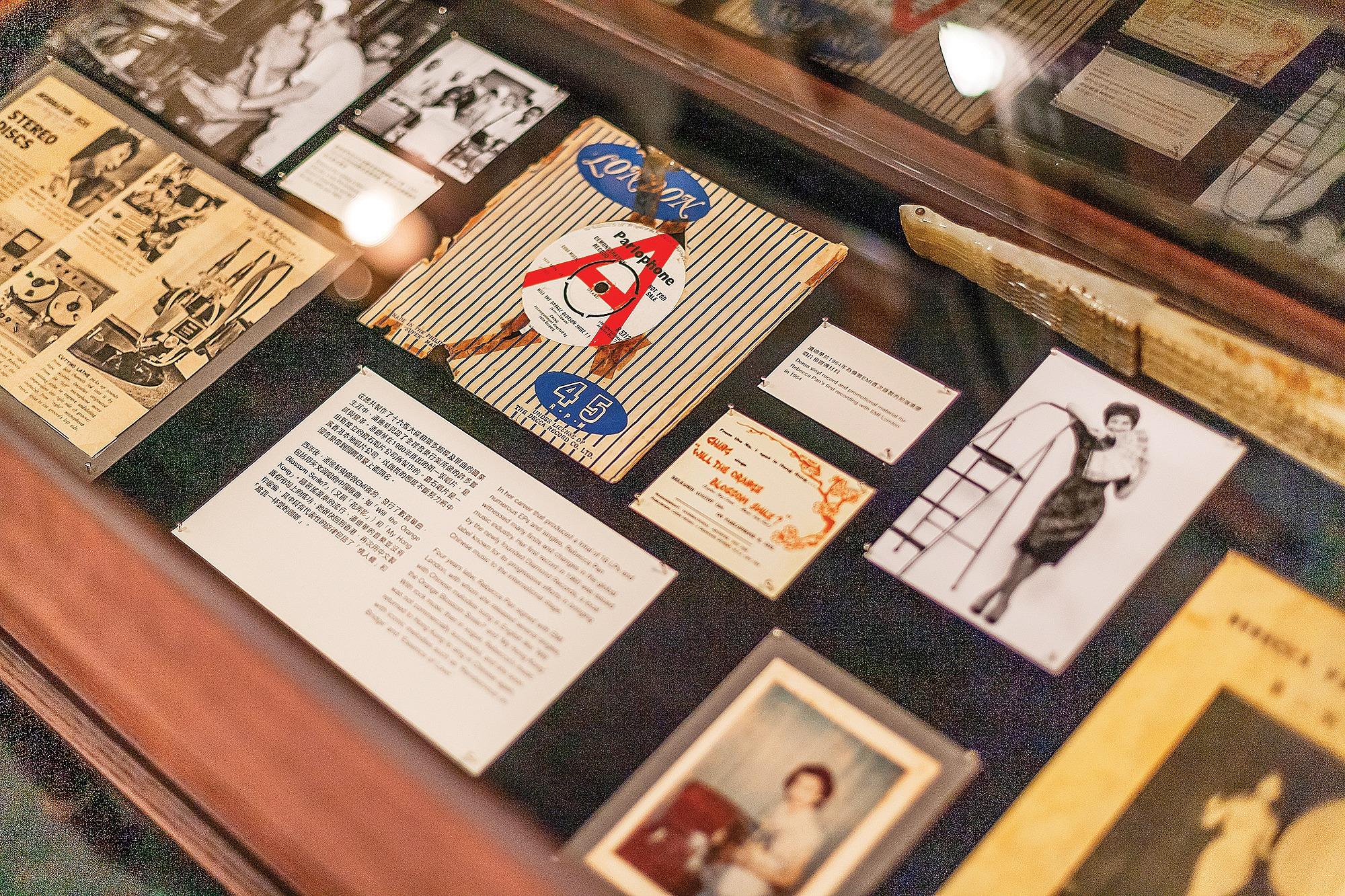 Pan was one of the first Chinese artists to sing in English. (PHOTO PROVIDED TO CHINA DAILY)
Pan was one of the first Chinese artists to sing in English. (PHOTO PROVIDED TO CHINA DAILY)
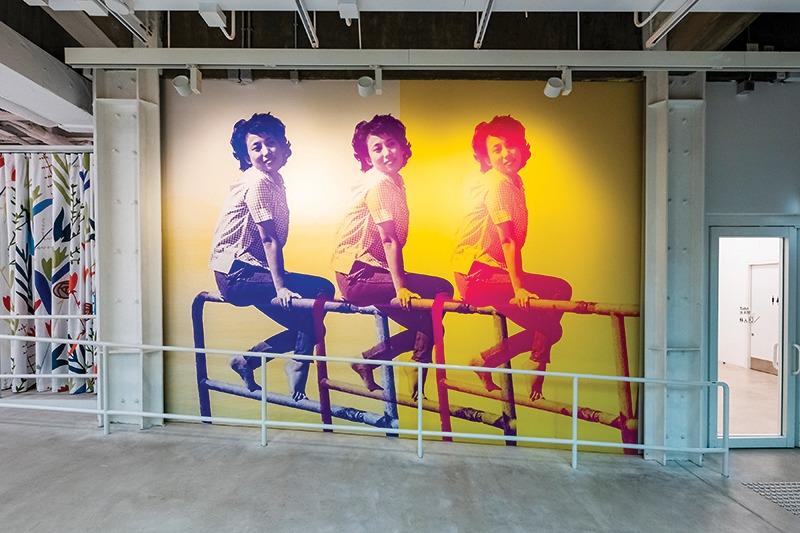 An image of Pan in her youth. At 93, the artist is still going strong and actively contributed to the exhibition. (PHOTO PROVIDED TO CHINA DAILY)
An image of Pan in her youth. At 93, the artist is still going strong and actively contributed to the exhibition. (PHOTO PROVIDED TO CHINA DAILY)
“She was reliving a lot of memories as she went around,” says Wang, fondly recalling Pan’s first visit to the show. “You could see how interested she was in the new narrative we have tried to create.”
Cheng says that the creative team spent days in debate and discussion, trying “to make sure that this was not going to be an academic show”. They were keen that the audience “enjoyed themselves — otherwise, it’s not a Rebecca Pan show”.
The exhibition is a fine example of how, increasingly, curators are putting the audience at the center of their projects. At CHAT’s Rebecca Pan showcase, audiences are encouraged to immerse themselves in and even own a piece of the times the artist has lived through. An example of this is a section of the show, designed like a living-room set and featuring furniture owned by the artist. Visitors can make use of these as they watch a video featuring highlights from the past 20 years of Pan’s life, spliced together by filmmaker Chan Chung-ki.
 The Madame Song: Pioneering Art and Fashion in China exhibition at M+ celebrates the life and work of cultural influencer Song Huai-kuei. (PHOTO COURTESY OF M+)
The Madame Song: Pioneering Art and Fashion in China exhibition at M+ celebrates the life and work of cultural influencer Song Huai-kuei. (PHOTO COURTESY OF M+)
Trend-setter
One of Hong Kong’s most audience-oriented cultural institutions, the M+ museum, is also paying tribute to an icon of the arts. Song Huai-kuei (1937–2006), aka Madame Song, helped introduce concepts of high fashion to China as the country started opening up to the world in the 1980s. Song acted like a cultural bridge. On one hand, she was helping fashion heavyweights such as Pierre Cardin break into the Chinese market. On the other, as the front-of-the-house hostess of Maxim’s in Beijing, she helped turn the art-nouveau-style restaurant into a center of activity for the country’s filmmakers, writers, models and fashion designers.
Titled Madame Song: Pioneering Art and Fashion in China, the exhibition at M+ begins with a showcasing of clothes from her days working with Cardin and personal items that help tell her story. It continues through her “artist” and “entrepreneur” periods, and her work contributing to China’s rising avant-garde movement in the 1980s. Next it takes visitors through Song’s time as a “fashionista” and “cultural ambassador” — the phases during which she helped to promote the idea of Chinese society in the West. Overall the exhibition provides a sense of intimacy with a subject who thrived at a time that in so many ways already feels like another age.
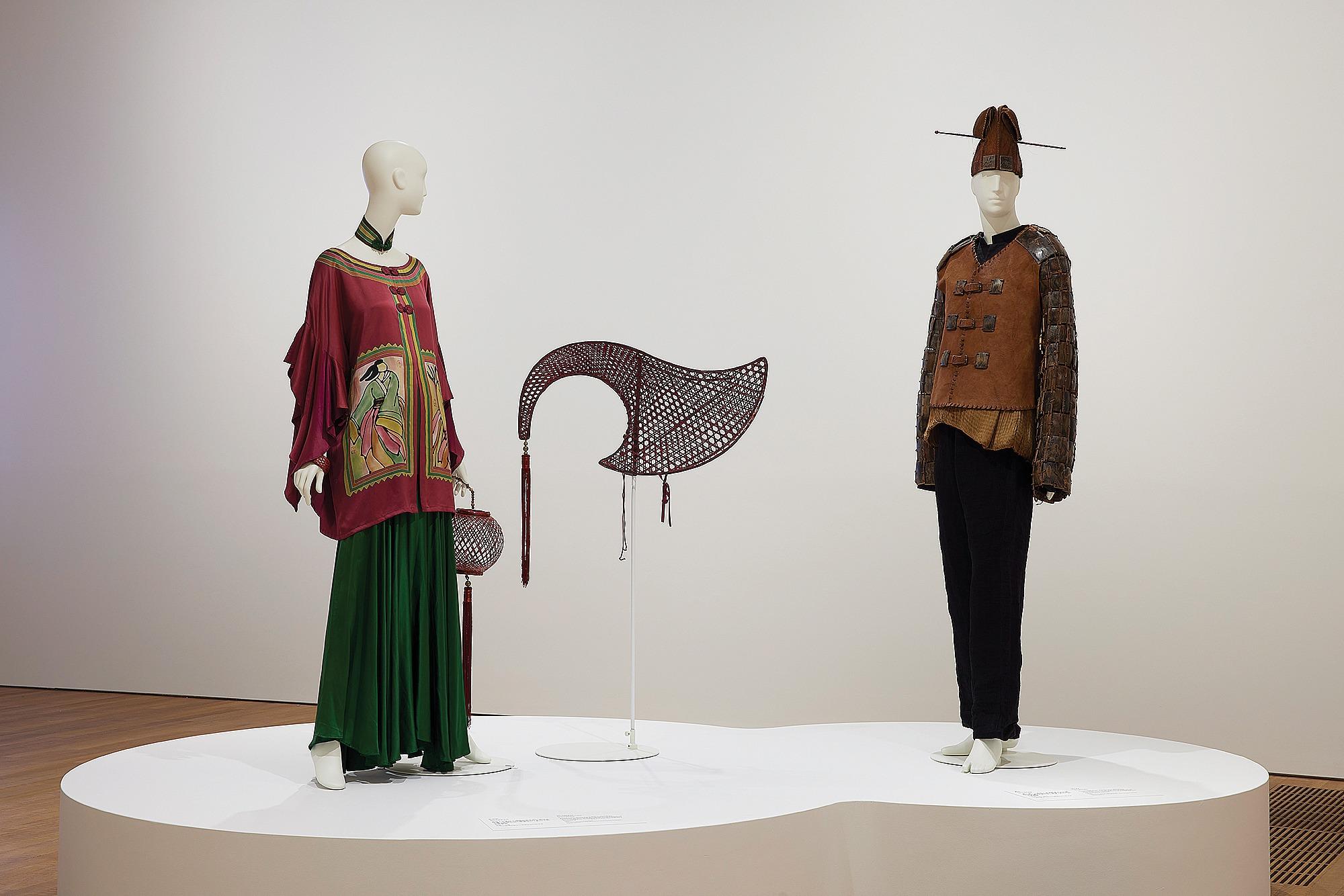 Song introduced Chinese designs to a Western audience. (PHOTO COURTESY OF M+)
Song introduced Chinese designs to a Western audience. (PHOTO COURTESY OF M+)
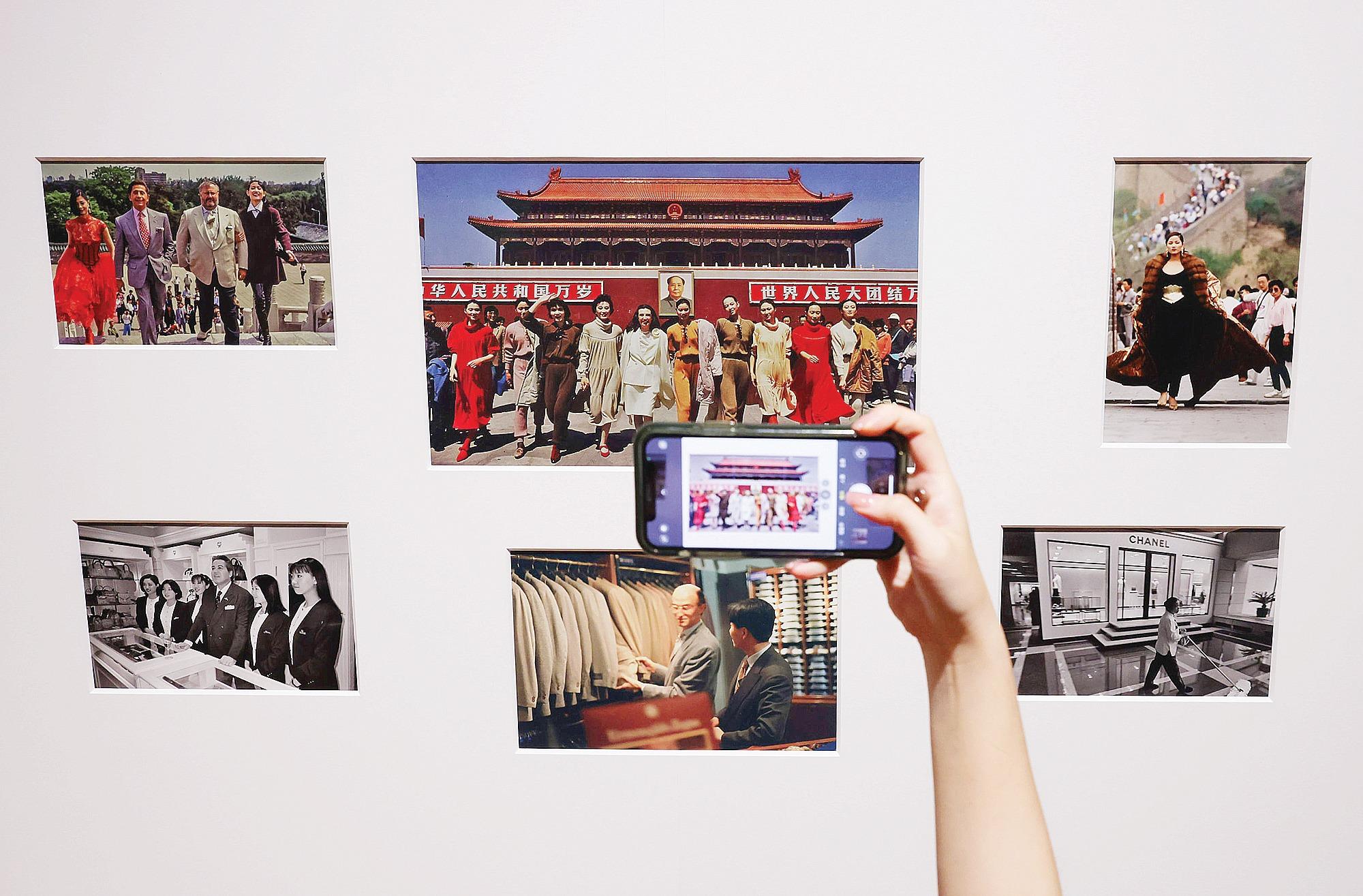 Exhibition display with photos of Song’s fashion show at the Forbidden City. (CALVIN NG / CHINA DAILY)
Exhibition display with photos of Song’s fashion show at the Forbidden City. (CALVIN NG / CHINA DAILY)
In a joint statement, M+’s De Ying associate curator, Wu Mo, and the associate curator of design and architecture, Tanja Cunz, describe Song as “one of the key figures in China’s visual cultural sphere in the 1980s and 1990s”.
“She may not be a household name today, yet the extraordinary story of her promoting global cultural exchange and contributing to social change continues to fascinate and inspire us,” they say. “This exhibition is more than just a story of an individual mind striving for creativity and expression in a time of transformation and change. It represents the potential of each individual to pursue their own trajectory. Through the strength of M+’s interdisciplinary practice, we are able to fully portray the life and important legacy of Madame Song.”
 Designs from the Pierre Cardin archives. Song helped the Italian-French doyen of fashion to enter the Chinese market. (PHOTO COURTESY OF M+)
Designs from the Pierre Cardin archives. Song helped the Italian-French doyen of fashion to enter the Chinese market. (PHOTO COURTESY OF M+)
Live life queen-size
The lives of both Pan and Song are marked by a plethora of cinematic elements — full of drama, color and emotion. Fittingly, films are integral to both exhibitions.
The M+ show features extended clips from two films in which Song had roles. These include director Mi Jiashan’s rarely screened absurdist comedy Troubleshooters (1989), in which Song is present in a wild fashion show with the characters in contemporary and traditional outfits. She also appeared in Italian director Bernardo Bertolucci’s The Last Emperor (1987), playing the titular character’s mother. The film won nine Academy Awards, including one for best costume design.
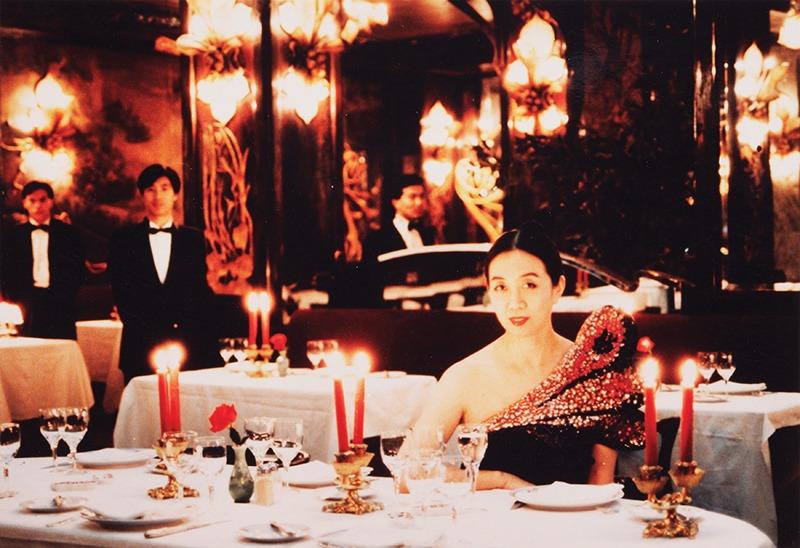 As front-of-the-house hostess of Maxim’s in Beijing, Song was hugely influential in the city’s cultural circuit. (PHOTO COURTESY OF M+)
As front-of-the-house hostess of Maxim’s in Beijing, Song was hugely influential in the city’s cultural circuit. (PHOTO COURTESY OF M+)
A number of video clips figure in the exhibition on Pan as well. At its center is a 20-minute film, Just Like Snakes, that takes its cue from artist-director Cheng’s sustained fascination with both Pai Niang Niang and its source material. Pan’s musical was spectacular, with elaborate Broadway-style sets, but bombed at the box office.
“I talked with Pan about White Snake being a conflicted character and told her that we wanted to unpack that aspect of the character with her because to us she herself is also that kind of a figure,” says Cheng.
 Song played the mother of the titular character in Bertolucci’s The Last Emperor (1987). (PHOTO COURTESY OF M+)
Song played the mother of the titular character in Bertolucci’s The Last Emperor (1987). (PHOTO COURTESY OF M+)
Both Song and Pan forged their own paths in life, leaving their distinct stamps on Chinese culture. The two accomplished exhibitions at CHAT and M+ enable us to revisit their achievements through the lens of our own times.
If you go
With the Sun, She Quells the Night — A Tribute to Rebecca Pan
Date: Through Oct 23
Venue: CHAT, The Mills, 45 Pak Tin Par Street, Tsuen Wan, New Territories.
Madame Song: Pioneering Art and Fashion in China
Date: Through April 14
Venue: M+, West Kowloon Cultural District, 38 Museum Drive. Kowloon


